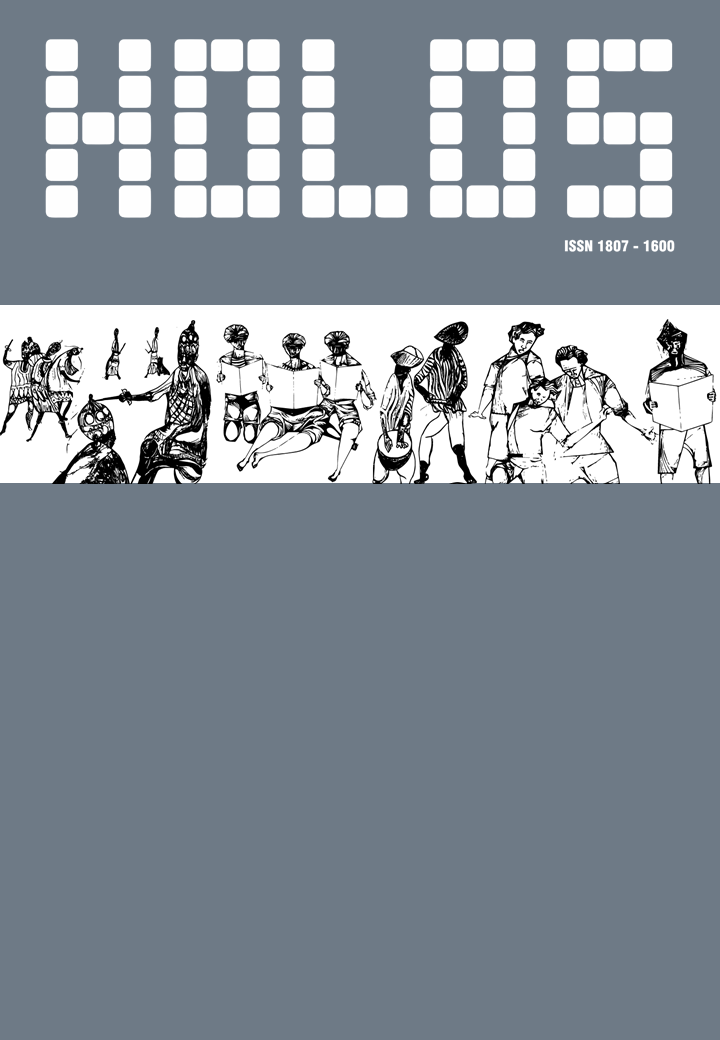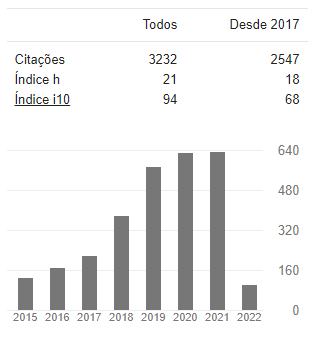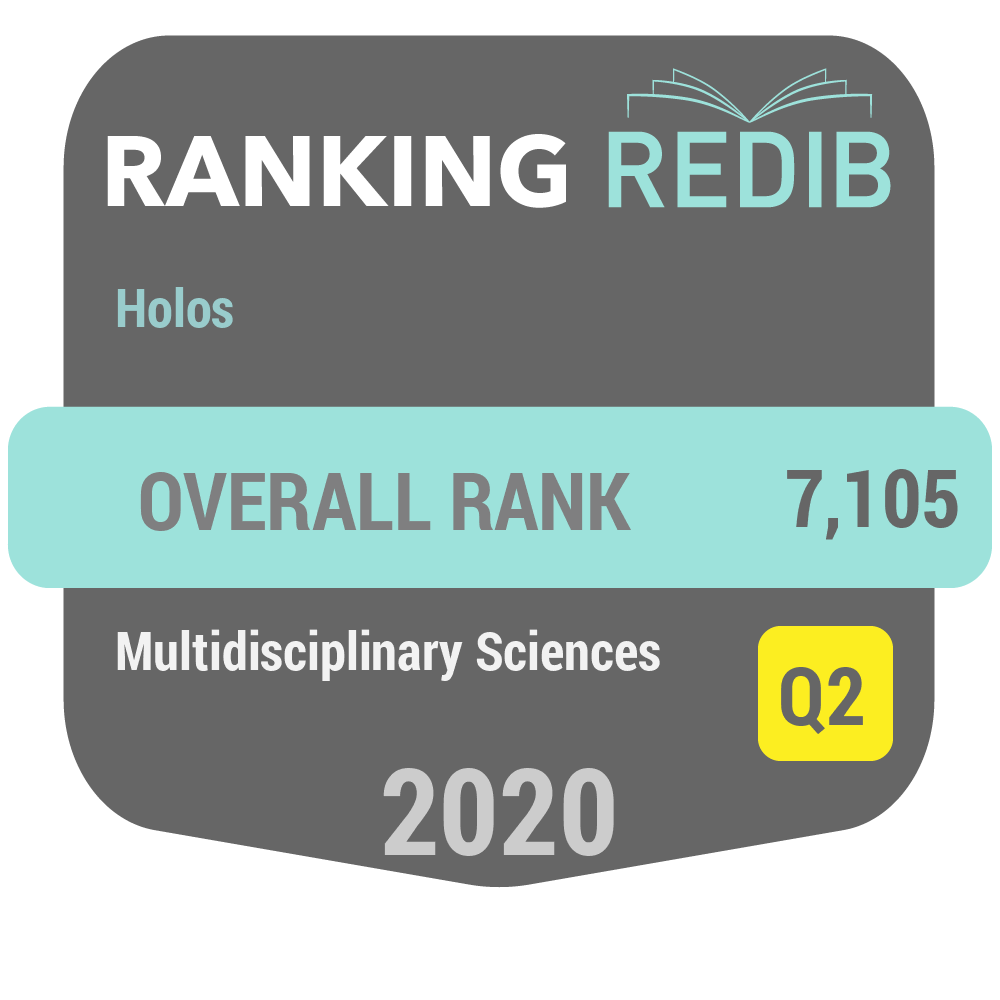Los efectos de la cultura organizacional en la innovación de las pequeñas empresas de un país en desarrollo
DOI:
https://doi.org/10.15628/holos.2019.6644Palavras-chave:
Cultura organizacional, Innovación, Mipymes, Modelización de Ecuaciones EstructuralesResumo
En este nuevo milenio, toda organización debe encontrar la estrategia que le permita el logro de ventajas competitivas, por tal razón, una de las estrategias que mejores resultados puede generar a las empresas de menor tamaño es la innovación. En este sentido se realizó una investigación empírica de tipo explicativo a partir de una muestra de 251 micro, pequeñas y medianas empresas del estado de Guanajuato, con el propósito de conocer los efectos de la cultura organizacional en el nivel de innovación de este tipo de empresas. Los resultados obtenidos a través de la Modelización de Ecuaciones Estructurales permiten inferir que los efectos de la cultura organizacional tienen una fuerte influencia positiva y significativa en el nivel de innovación de este tipo de empresas. Por lo tanto, los tomadores de decisiones deben implementar dentro de sus organizaciones esta práctica estratégica empresarial en la que se fortalezcan la creatividad y el desarrollo de nuevos productos para obtener resultados organizacionales deseados.
Downloads
Referências
Abdul-Jalal, H., Toulson, P., & Tweed, D. (2013). Knowledge sharing for sustaining organizational competitive advantage. Procedia Economics and Finance, 7, 150-157. doi:10.1016/S2212-5671(13)00229-3
Abdullah, N.H., Shamsuddin, A., Wahab, E., & Hamid, N.A.A. (2014). The relationship between organizational culture and product innovativeness. Procedia Social and Behavioral Sciences, 129, 140-147.
Anderson, J., & Gerbing, D. (1988). Structural equation modeling in practice: a review and recommended two-step approach. Psychological Bulletin, 103(3), 411-423.
Andrews, K.R. (1994). The concept of corporate strategy, in: Dewit, B., Meyer, B. (Eds.), Strategy: Process, Content and Context. West, NY.
Bagozzi, R.P., & Yi, Y. (1988). On the evaluation of structural equation models. Journal of the Academy of Marketing Science, 16(1), 74-94.
Barney, J.B. (1986). Organizational culture: Can it be source of sustained competitive advantage? Academy of Management Review, 11(3), 656-665.
Bentler, P.M. (2005). EQS 6 Structural Equations Program Manual. Encino, CA: Multivariate Software.
Bentler, P.M., & Bonnet, D. (1980). Significance tests and goodness of fit in analysis of covariance structures. Psychological Bulletin, 88, 588-606.
Bozbura, T.F. (2004). Measurement and application of intellectual capital in Turkey. The Learning Organization, 11(4/5), 357-367. Retrieve from
http://dx.doi.org/10.1108/09696470410538251
Cavaliere, V., & Lombardi, S. (2015). Exploring different cultural configurations: How do they affect subsidiaries’ knowledge sharing behaviors? Journal of Knowledge Management, 19(2), 141-163.
Chaston, I., Badger, B., & Sadler-Smith, E. (1999). Small firm organizational learning: comparing the perceptions of need and style among UK support service advisors and small firm managers. Journal of European Industrial Training, 23(1), 36-43.
Cuevas-Vargas, H., Estrada, S., & Larios-Gómez, E. (2016). The effects of ICTs as innovation facilitators for greater business performance. Evidence from Mexico. Procedia Computer Science, 91, 47-56.
Damanpour, F., & Gopalakrishnan, S. (2001). The dynamics of the adoption of products and process innovations in organizations. Journal of Management Studies, 38(1), 45-65. doi: 10.1111/1467-6486.00227
Fornell, C.G., & Larcker, D. (1981). Evaluating structural equation models with unobservable variables and measurement error, Journal of Marketing Research, 18, 39-50.
Hair, J.F., Black, W.C., Babin, B.J., & Anderson, R.E. (2010). Multivariate Data Analysis (7th Edition). New Jersey: Prentice Hall.
Hair, J.F., Hult, G.T.M., Ringle, C.M., & Sarstedt, M. (2014). A primer on partial least squares structural equation modeling (PLS-SEM). Thousand Oaks, CA: SAGE Publications.
Hartmann, A. (2006). The role of organizational culture in motivating innovative behavior in construction firms. Construction Innovation, 6(3), 159-172.
Hofstede, G., Hofstede, G.J., & Minkov, M. (2010). Cultures et organisations: Nos programmations mentales. Paris, France: Pearson Education France.
Hogan, S.J., & Coote, L.V. (2014). Organizational culture, innovation, and performance: A test of Schein’s model. Journal of Business Research, 67, 1609-1621.
Jöreskog, K.G., & Sörbom, D. (1986). LISREL VI: Analysis of Linear Structural Relationships by Maximum Likelihood, Instrumental Variables and Square Methods. Moorsville, IN: Scientific Software.
Lin, W.-B. (2008). The effect of knowledge sharing model. Expert Systems with Applications, 34(2), 1508-1521.
Madrid-Guijarro, A., García, P.D.L.D., & Van Auken, H. (2009). Barriers to innovation among Spanish manufacturing SMEs. Journal of Small Business Management, 47(4), 465-488. DOI: 10.1111/j.1540-627X.2009.00279.x
Maheshwarkar, M., & Sohani, N. (2013). Combined AHP-TOPSIS based approach for evaluation of knowledge sharing capabilities of supply chain partners. Management Science and Engineering, 7(3), 27-32.
Matinaro, V., & Liu, Y. (2017). Towards increased innovativeness and sustainability through organizational culture: A case study of Finnish construction business. Journal of Cleaner Production, 142, 3184-3193.
Miron, E., Erez, M., & Naveh, E. (2004). Do personal characteristics and cultural values that promote innovation, quality, and efficiency compete or complement each other? Journal of Organizational Behavior, 25(2), 175-199. DOI: 10.1002/job.237
Morgan, G. (1997). Images of Organization. London: Sage Publications.
Naranjo-Valencia, J.C., Jiménez-Jiménez, D., & Sanz-Valle, R. (2011). Innovation or imitation? The role of organizational culture. Management Decision, 49(1), 55-72.
Naranjo-Valencia, J.C., Jiménez-Jiménez, D., & Sanz-Valle, R. (2012). ¿Es la cultura organizativa un determinante de la innovación en la empresa? Cuadernos de Economía y Dirección de la Empresa, 15, 63-72. doi:10.1016/j.cede.2011.07.004
Naranjo-Valencia, J.C., Jiménez-Jiménez, D., & Sanz-Valle, R. (2016). Studying the links between organizational culture, innovation, and performance in Spanish companies. Revista Latinoamericana de Psicología, 48, 30-41.
Nunnally, J.C., & Bernstein, I.H. (1994). Psychometric Theory, 3ª Ed. New York: McGraw-Hill.
OECD. (2003). Organization for economic cooperation and development. Measurement of Knowledge Management: Practices measuring knowledge management in the business sector. Paris, France: OECD/Minister of Industry.
O’Reagan, N., Ghobadian, A., & Sims, M. (2006). Fast tracking innovation in manufacturing SMEs. Technovation, 26, 251-261. doi:10.1016/j.technovation.2005.01.003
O'Reilly, CH.A., Chatman, J., & Caldwell, D.F. (1991). People and organizational culture: a profile comparison approach to assessing person-organization fit. Academy of Management Journal, 34(3). 487-516.
Papke-Shields, K.E., Malhotra, M.J., & Grover, V. (2002). Strategic manufacturing planning systems and their linkage to planning system success. Decision Science, 13(1), 1-30.
Parjanen, S. (2012). Experiencing creativity in the organization: from individual creativity to collective creativity. Interdisciplinary Journal of Information, Knowledge, and Management, 7, 109-128.
Satorra, A., & Bentler, P.M. (1988). Scaling corrections for chi square statistics in covariance structure analysis. American Statistics Association 1988 Proceedings of the Business and Economic Sections, 308-313. Alexandria, VA: American Statistical Association.
Schein, E.H. (2010). Organizational culture and leadership, 4th Edition. San Francisco, CA: John Wiley & Sons.
Sistema de Información Empresarial Mexicano. (November 28, 2016). Retrieved from Directorio de Empresas: http://www.siem.gob.mx/siem/estadisticas/estadotamanoPublico.asp?tam=3&p=1
Škerlavaj, M., Song, J.H., & Lee, Y. (2010). Organizational learning culture, innovative culture and innovations in South Korean firms. Expert Systems with Applications, 37(9), 6390-6403.
Syed, N., & Lin, X. (2013). Relationship between human resource management practices and enterprise innovation: mediating role of creative culture. In Proceedings of the 2013 International Conference on Information, Business and Education Technology (ICIBET 2013) (pp. 534-537). Atlantis Press.
Tseng, F.-C., & Fan, Y.-J. (2011). Exploring the influence of organizational ethical climate on knowledge management. Journal of Business Ethics, 101(2), 325-342. DOI: 10.1007/s10551-010-0725-5
Váldez-Juarez, L.E., García-Pérez, D.L.D., & Maldonado-Guzmán, G. (2016). Management of knowledge, innovation and performance in SMEs. Interdisciplinary Journal of Information, Knowledge, and Management, 11, 141-176.
Wang, S., & Noe, R.A. (2010). Knowledge sharing: A review and directions for future research. Human Resource Management Review, 20(2), 115-131.
Yesil, S., & Kaya, A. (2013). The effect of organizational culture on firm financial performance: evidence from a developing country. Procedia Social and Behavioral Sciences, 81, 428-437.
Zheng, W., Yang, B., & McLean, G.N. (2010). Linking organizational culture, structure, strategy and organizational effectiveness: mediating role of knowledge management. Journal of Business Research, 63(7), 763-771.









































